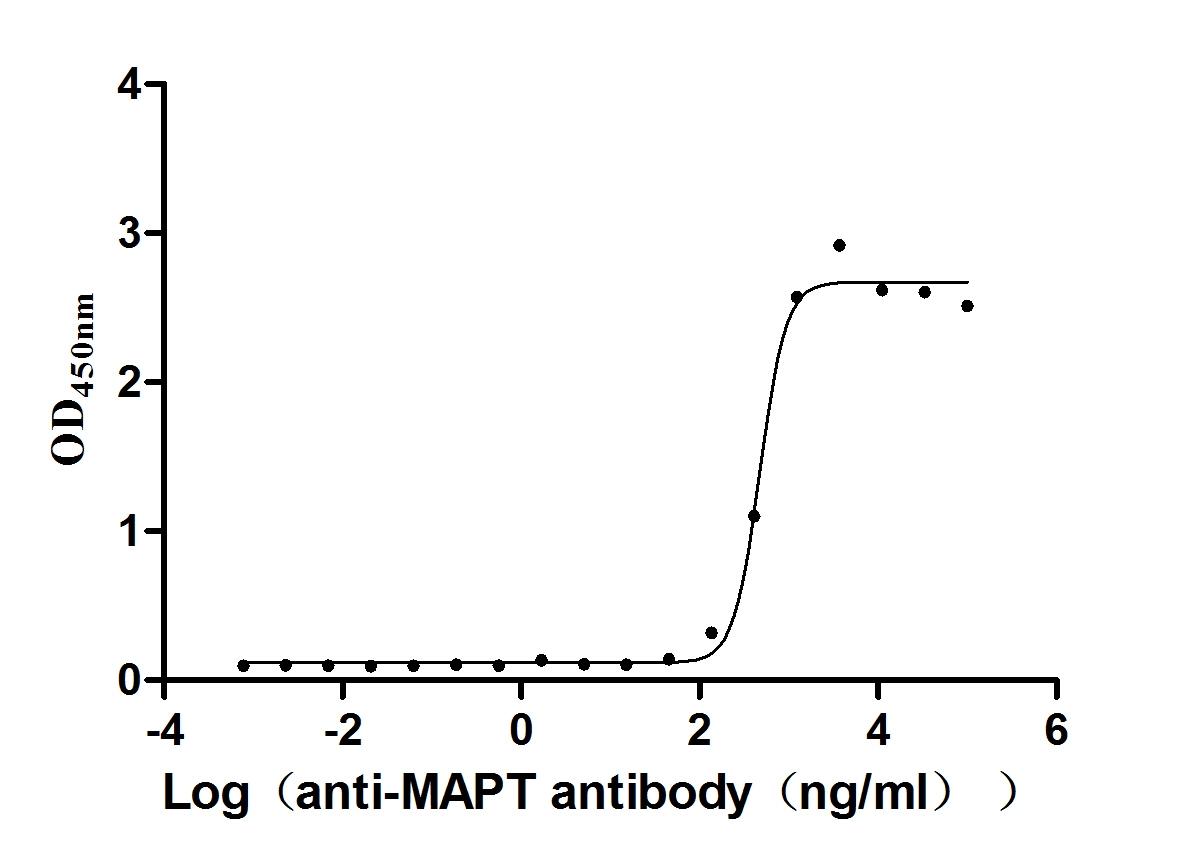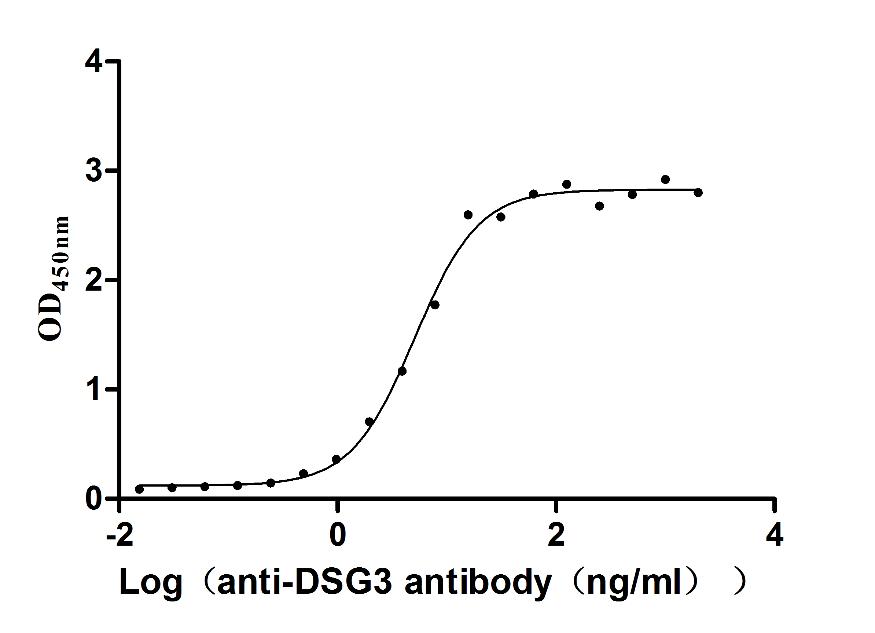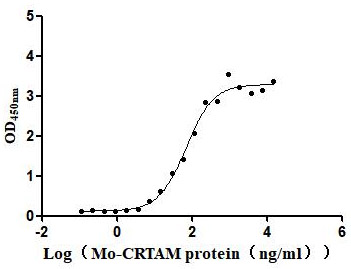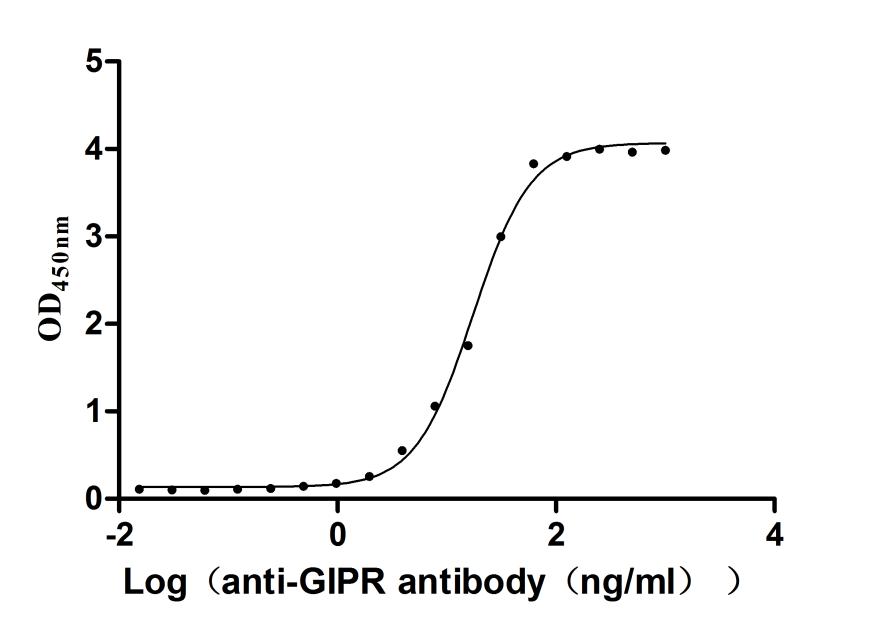Recombinant Human Presequence protease, mitochondrial (PITRM1), partial
-
中文名稱:人PITRM1重組蛋白
-
貨號(hào):CSB-YP692283HU
-
規(guī)格:
-
來(lái)源:Yeast
-
其他:
-
中文名稱:人PITRM1重組蛋白
-
貨號(hào):CSB-EP692283HU
-
規(guī)格:
-
來(lái)源:E.coli
-
其他:
-
中文名稱:人PITRM1重組蛋白
-
貨號(hào):CSB-EP692283HU-B
-
規(guī)格:
-
來(lái)源:E.coli
-
共軛:Avi-tag Biotinylated
E. coli biotin ligase (BirA) is highly specific in covalently attaching biotin to the 15 amino acid AviTag peptide. This recombinant protein was biotinylated in vivo by AviTag-BirA technology, which method is BriA catalyzes amide linkage between the biotin and the specific lysine of the AviTag.
-
其他:
-
中文名稱:人PITRM1重組蛋白
-
貨號(hào):CSB-BP692283HU
-
規(guī)格:
-
來(lái)源:Baculovirus
-
其他:
-
中文名稱:人PITRM1重組蛋白
-
貨號(hào):CSB-MP692283HU
-
規(guī)格:
-
來(lái)源:Mammalian cell
-
其他:
產(chǎn)品詳情
-
純度:>85% (SDS-PAGE)
-
基因名:
-
Uniprot No.:
-
別名:hMP1; hPreP; KIAA1104; Metalloprotease 1; MGC138192; MGC141929 ; mitochondrial; MP1; Pitrilysin metallopeptidase 1; Pitrilysin metalloproteinase 1; PITRM 1; PITRM1; PreP; PreP peptidasome; PREP_HUMAN; Presequence protease; Presequence protease mitochondrial
-
種屬:Homo sapiens (Human)
-
蛋白長(zhǎng)度:Partial
-
蛋白標(biāo)簽:Tag?type?will?be?determined?during?the?manufacturing?process.
The tag type will be determined during production process. If you have specified tag type, please tell us and we will develop the specified tag preferentially. -
產(chǎn)品提供形式:Lyophilized powder
Note: We will preferentially ship the format that we have in stock, however, if you have any special requirement for the format, please remark your requirement when placing the order, we will prepare according to your demand. -
復(fù)溶:We recommend that this vial be briefly centrifuged prior to opening to bring the contents to the bottom. Please reconstitute protein in deionized sterile water to a concentration of 0.1-1.0 mg/mL.We recommend to add 5-50% of glycerol (final concentration) and aliquot for long-term storage at -20℃/-80℃. Our default final concentration of glycerol is 50%. Customers could use it as reference.
-
儲(chǔ)存條件:Store at -20°C/-80°C upon receipt, aliquoting is necessary for mutiple use. Avoid repeated freeze-thaw cycles.
-
保質(zhì)期:The shelf life is related to many factors, storage state, buffer ingredients, storage temperature and the stability of the protein itself.
Generally, the shelf life of liquid form is 6 months at -20°C/-80°C. The shelf life of lyophilized form is 12 months at -20°C/-80°C. -
貨期:Delivery time may differ from different purchasing way or location, please kindly consult your local distributors for specific delivery time.Note: All of our proteins are default shipped with normal blue ice packs, if you request to ship with dry ice, please communicate with us in advance and extra fees will be charged.
-
注意事項(xiàng):Repeated freezing and thawing is not recommended. Store working aliquots at 4°C for up to one week.
-
Datasheet :Please contact us to get it.
相關(guān)產(chǎn)品
靶點(diǎn)詳情
-
功能:Metalloendopeptidase of the mitochondrial matrix that functions in peptide cleavage and degradation rather than in protein processing. Has an ATP-independent activity. Specifically cleaves peptides in the range of 5 to 65 residues. Shows a preference for cleavage after small polar residues and before basic residues, but without any positional preference. Degrades the transit peptides of mitochondrial proteins after their cleavage. Also degrades other unstructured peptides. It is also able to degrade amyloid-beta protein 40, one of the peptides produced by APP processing, when it accumulates in mitochondrion. It is a highly efficient protease, at least toward amyloid-beta protein 40. Cleaves that peptide at a specific position and is probably not processive, releasing digested peptides intermediates that can be further cleaved subsequently.
-
基因功能參考文獻(xiàn):
- Redox control of hPreP in the mitochondrial matrix and the protective role of the conserved methionine 206 residue as an internal antioxidant. PMID: 23041349
- The authors identified two siblings carrying a homozygous PITRM1 missense mutation (c.548G>A, p.Arg183Gln) associated with an autosomal recessive, slowly progressive syndrome characterised by mental retardation, spinocerebellar ataxia, cognitive decline and psychosis. PMID: 26697887
- Data show that the hPreP presequence only targets GFP to the matrix of mammalian and yeast mitochondria. PMID: 21621546
- This study demonstrated decreased proteolytic activity of the mitochondrial amyloid-beta degrading enzyme, PreP peptidasome, in Alzheimer's disease brain mitochondria. PMID: 21750375
- our data suggest that genetic variation in the hPreP gene PITRM1 may potentially contribute to mitochondrial dysfunctions PMID: 19962426
- The substrate specificity of the mitochondrial metallopeptidase proteinase 1 (MP1) was investigated and its mitochondrial targeting signal identified. PMID: 19196155
- Data revealed that six polymorphisms of F10, PITRM1, PCSK2, JPH3, MYO7B, and AKAP12 were related (P<0.05) to the prevalence of chronic kidney disease. PMID: 19724895
顯示更多
收起更多
-
亞細(xì)胞定位:Mitochondrion matrix.
-
蛋白家族:Peptidase M16 family, PreP subfamily
-
組織特異性:Widely expressed. Expressed at higher level in muscle and heart compared to brain, pancreas, liver, lung and placenta.
-
數(shù)據(jù)庫(kù)鏈接:
Most popular with customers
-
Recombinant Mouse Microtubule-associated protein tau (Mapt) (Active)
Express system: Mammalian cell
Species: Mus musculus (Mouse)
-
Recombinant Human Epithelial discoidin domain-containing receptor 1 (DDR1), partial (Active)
Express system: Mammalian cell
Species: Homo sapiens (Human)
-
Recombinant Human Desmoglein-3 (DSG3), partial (Active)
Express system: Baculovirus
Species: Homo sapiens (Human)
-
Recombinant Mouse Cell adhesion molecule 1 (Cadm1), partial (Active)
Express system: Mammalian cell
Species: Mus musculus (Mouse)
-
Recombinant Human C-C chemokine receptor type 6(CCR6)-VLPs (Active)
Express system: Mammalian cell
Species: Homo sapiens (Human)
-
Recombinant Human Gastric inhibitory polypeptide receptor(GIPR),partial (Active)
Express system: Mammalian cell
Species: Homo sapiens (Human)

















